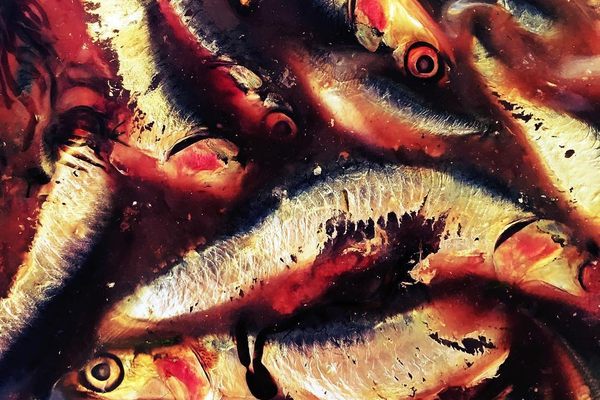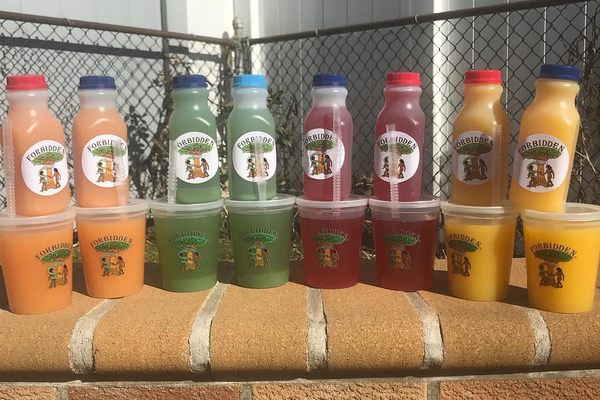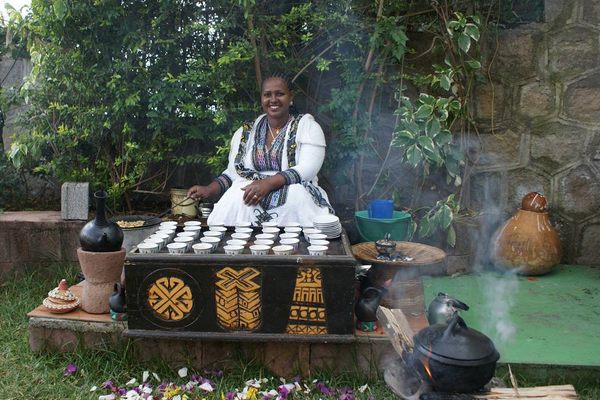Its aroma makes the nose dry and the mouth salivate. Its taste is a smooth balance of earthy, sweet, and sour. In its purest original form, this dark, syrupy condiment of northern Italy’s Emilia-Romagna region is called Traditional Balsamic Vinegar of Modena DOP or Traditional Balsamic Vinegar of Reggio Emilia DOP (which stands for “Protected Designation of Origin”). Although versions made with less-thorough techniques permeate supermarkets around the world, traditional balsamic vinegar is a meticulously aged, complex product that can improve everything from cheese to fruit to one’s health, all with a simple drizzle.
The origins of balsamic vinegar go back to the ancient Romans, who enjoyed drinking sapa, made by boiling the juice of freshly pressed grapes. (Vinegar production in general stretches back even further, to the ancient Egyptians in 3,000 BCE.) It’s not known exactly when the idea of aging sapa in wooden barrels to create a superior vinegar took hold in Emilia-Romagna, though there is a poem recounting an 11th-century Italian prince gifting vinegar to Henry III of Franconia, indicating that it had, by that time, become an esteemed local product.
Writings from the Renaissance onward refer to a special “duke’s vinegar,” until finally, in 1747, the term balsamic appears in an inventory of Modena’s noble House of Este. The name is derived from the Latin balsamum, a reference to the curative balsam tree, as the vinegar was also used for medicinal purposes, such as combating plagues.
Traditional methods of balsamic vinegar production are still used today. White grapes from Modena and Reggio Emilia vineyards (mainly the trebbiano variety) are harvested late in the autumn for the highest concentration of sugars. After pressing, the liquid must is slowly cooked until it is reduced by at least half. Then begins a years-long process of aging and reduction, as makers transfer the liquid through a succession of increasingly smaller wooden barrels until it becomes a syrup of intense, complex flavors. This takes place mostly in family attics, where temperatures are perfect for the process—hot summers to promote fermentation and cold winters to slow down the activity and allow the liquid to absorb the barrel’s resins.
After a minimum of 12 years, the vinegar is rigorously tested by a consortium to ensure its quality. Approved Modena vinegar is bottled in glass containers created by Giorgetto Giugiaro, a famous designer of Italian cars, and in Reggio Emilia it’s packaged in slim, triangular-shaped bottles. They are labeled affinato if the vinegar is aged at least 12 years, and stravecchio if aged at least 25 years.
With so much time and precision put into production, traditional balsamic vinegar is expensive, costing about $50 for a 100-milliliter bottle for affinato and twice that for the same-sized stravecchio. Less expensive bottles are designated as “IGP” (Protected Geographical Indication). Though these are made with the same grapes, they’re generally aged for less time and might contain wine vinegar. Cheapest of all are the supermarket balsamics, which contain must aged a minimum of two months, mostly wine vinegar, and caramel coloring.
Real balsamic is never cooked, but drizzled as a finishing flourish over parmesan chunks, strawberries, or a cutlet to add a savory punch. Its medicinal reputation also continues, as some health experts claim it improves circulation, digestion, and symptoms of diabetes.
Where to Try It
-
Acetaia di Giorgio
Via Sandro Cabassi, 67, Modena, 41123, ItalyA favorite producer in Modena.
Written By
 Susan Van Allen
Susan Van Allen
Sources
- www.seriouseats.com/2014/05/everything-you-need-to-know-guide-to-balsamic-vinegar.html
- www.thespruce.com/about-balsamic-vinegar-1808088
- www.ncbi.nlm.nih.gov/pmc/articles/PMC1785201/
- books.google.com/books?id=2J7LBgAAQBAJ&pg=PA17&dq=vinegar+franconia+modena&hl=en&sa=X&ved=0ahUKEwjDtIO4hd3ZAhWnrFkKHQ3eD1sQ6AEIJzAA#v=onepage&q=vinegar%20franconia%20modena&f=false
- books.google.com/books?id=2J7LBgAAQBAJ&pg=PA17&dq=vinegar+franconia+modena&hl=en&sa=X&ved=0ahUKEwjDtIO4hd3ZAhWnrFkKHQ3eD1sQ6AEIJzAA#v=onepage&q=1747&f=false
- books.google.com/books?id=5xdi1moflE4C&pg=PA144&dq=vinegar+franconia+modena&hl=en&sa=X&ved=0ahUKEwjDtIO4hd3ZAhWnrFkKHQ3eD1sQ6AEINTAC#v=onepage&q=vinegar%20franconia%20modena&f=false
- books.google.com/books?id=XuPWgEMx_eIC&printsec=frontcover&dq=vinegar+franconia+modena&hl=en&sa=X&ved=0ahUKEwjDtIO4hd3ZAhWnrFkKHQ3eD1sQ6AEIRjAF#v=onepage&q=balsamic&f=false
- penelope.uchicago.edu/~grout/encyclopaedia_romana/wine/wine.html
- books.google.com/books?id=yNmatHmkIB0C&pg=PA269&lpg=PA269&dq=sapa+rome+vinegar&source=bl&ots=YdbgF1Y5MX&sig=j90iisbj8WiYQhD7ub-sPIJ7yTQ&hl=en&sa=X&ved=0ahUKEwj23oupi93ZAhWLjVkKHWupC9wQ6AEIgAEwBw#v=onepage&q=sapa%20rome%20vinegar&f=false
- books.google.com/books?id=M1AjczPJ260C&pg=PT37&dq=balsamic+vinegar+medicine+history&hl=en&sa=X&ved=0ahUKEwjtvovEjN3ZAhWqrFkKHXTnDScQ6AEIJzAA#v=onepage&q=balsamic%20vinegar%20plague&f=false


















